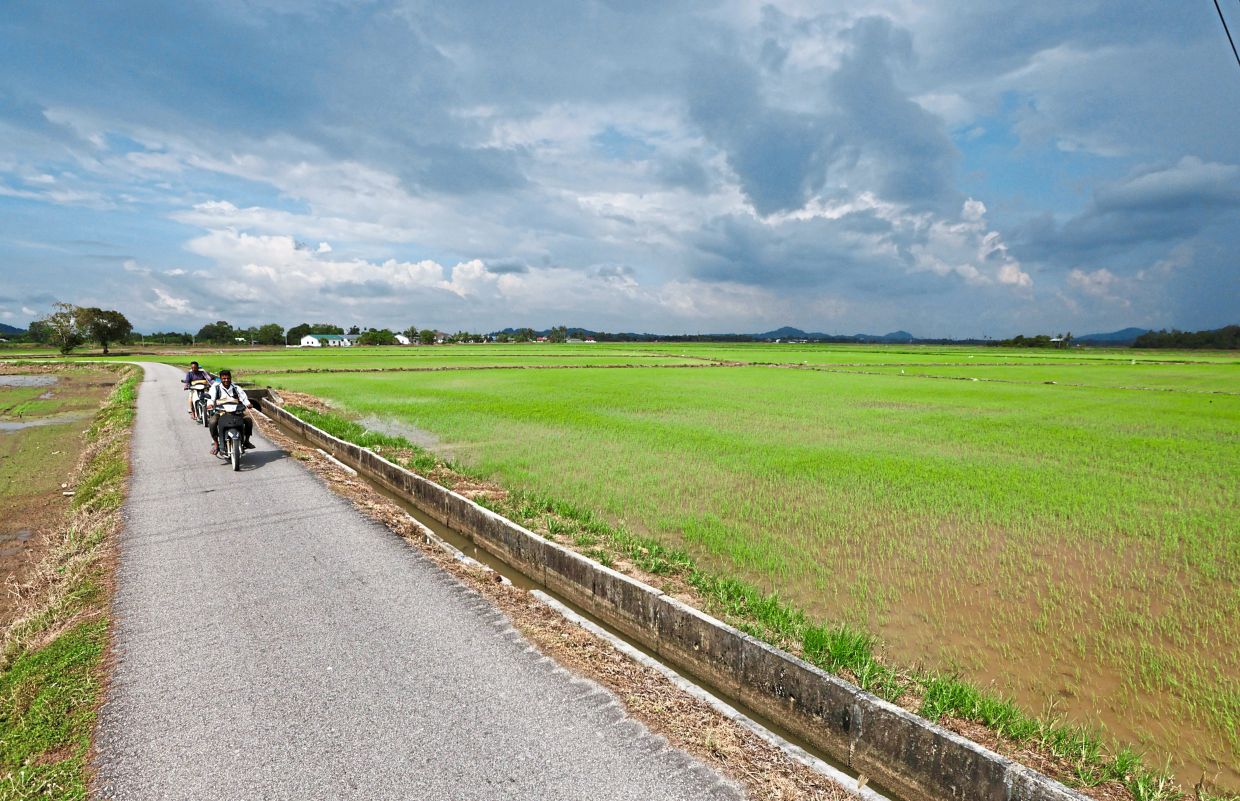ALOR SETAR (ANN/THE STAR) – For the first time in a decade, padi farmers in Kedah, Malaysia’s rice bowl state, are facing a crisis of daunting proportions.
The state, responsible for nearly half of the nation’s rice production, is grappling with severe disruptions that could see rice output next month dip by at least 10 per cent if conditions do not improve, according to the Muda Agriculture Development Authority (Mada).
The troubles began with catastrophic floods in September, which decimated crops and plunged farmers into debt. The northeast monsoon, expected to bring a predictable rhythm of rain, has added further unpredictability to the farmers’ plight.
For many, the September deluge destroyed not just their harvest but also their confidence in starting a new planting cycle that should have commenced at the start of that month.
“This is the worst we’ve seen in 10 years,” lamented Wan Maharuddin Sulaiman, a 67-year-old farmer from Pokok Sena.
“We’re supposed to adhere to a planting schedule that gives us five harvests a year, but now we look at the skies and feel nothing but dread. Many of us have just enough to feed our families. We can’t risk buying seeds or fertilisers with the weather so uncertain.”
The monsoon season, typically marked by heavy rains from November to December and a dry spell from January to mid-March, has turned erratic. Two weeks into this year’s cycle, fields meant for seeding remain parched unless farmers turn to irrigation canals for water.
“It’s climate change,” said Wan Maharuddin, shaking his head. “Our fields flooded when they weren’t supposed to, and now they’re dry when they should be wet.”
The story is much the same in Kangar, Perlis, where farmers are facing a bewildering sequence of weather extremes. Dollah Sabri, 52, recounted the relentless heatwave in July and August that dried up irrigation channels, only to be followed by September rains that oversaturated their crops just as they were ripening.
“We’re unsure how to proceed,” said Dollah. “Without reliable machinery and with unpredictable weather, starting a new planting cycle feels almost impossible.”
Some farmers, out of desperation, are turning to other crops such as vegetables, fruits, and corn, seeking to use idle plots while they wait for conditions to stabilise.
Dollah appealed for swift action from state and federal agencies. “We need immediate intervention to prevent further losses and help us regain our footing,” he said.

Assistance is on the horizon for some. Mada chairman Datuk Dr Ismail Salleh confirmed that 4,223 padi farmers affected by the September floods would soon receive aid from the Padi Crop Disaster Fund. Disbursements, expected within a week or two, aim to help farmers resume planting.
“Eligible farmers will receive support to kickstart their re-planting efforts,” said Dr Ismail. Surveys have shown that approximately 5,388 hectares of padi fields in the Muda basin were impacted. This includes 20 hectares in Perlis Region I, 1,525.6 hectares in Jitra Region II, 2,206.7 hectares in Pendang Region III, and 1,636.33 hectares in Kota Sarang Semut Region IV.
Dr Ismail added that around MYR10 million had been approved for the fund, with farmers set to receive at least MYR1,800 per hectare. Additionally, some farmers have already benefited from an initial cash relief of MYR1,000 each to offset immediate losses and support replanting.
On November 11, 80 farmers from all four Mada regions received these payments, with more set to follow in stages. Food baskets have also been distributed to affected families.
Dr Ismail acknowledged that the crisis underscores the urgent need for infrastructure improvements in the Mada regions. “If we can bolster the infrastructure, we can strengthen our local rice production,” he said.
As farmers brace for the uncertain weeks ahead, the hope is that swift action and improved support can ease their burdens and revive a crucial lifeline for the nation’s food security.





